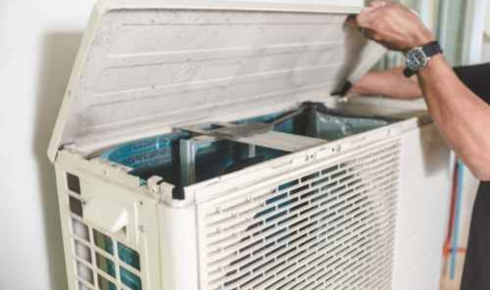Finding Fresh Air and Efficiency: The Small Fixes That Make a Big Difference in Home Comfort
Sometimes comfort isn’t about luxury—it’s about getting the basics right. The right temperature, a steady breeze, air that feels alive instead of stale. You notice when it’s missing, don’t you? That heavy, unmoving air that makes a room feel smaller than it really is. Or the strange heat your air conditioner seems to give up fighting every summer afternoon. The truth is, our homes breathe just like we do—and when something’s off, you can feel it.
Let’s take a little time to explore those subtle things that affect how comfortable and efficient your space feels. Things like how you ventilate, where you place your AC unit, and why airflow matters more than you think.
When the Sun Becomes Your AC’s Worst Enemy
If you’ve ever walked past your air conditioner’s outdoor unit in the middle of a blazing afternoon, you’ve probably felt how hot that metal casing gets. That heat isn’t harmless—it can actually reduce efficiency and shorten your system’s lifespan.
Installing your ac outdoor unit in sunlight might seem unavoidable, but it’s worth rethinking. Direct exposure to the sun means the condenser coils are working extra hard to push heat out of already hot air. That’s like trying to cool off by blowing on yourself in a sauna—it’s not impossible, but it’s exhausting.
A few simple changes can make a huge difference. Consider shading the unit with a strategically placed awning, screen, or even a few tall plants (just make sure they don’t block airflow). The idea isn’t to hide it in darkness but to give it a break from constant, direct rays. Even a 10°F drop around the unit can improve efficiency and help it cool faster.
Little tweaks like that can turn “good enough” cooling into smooth, steady comfort.
The Air You Don’t See—But Definitely Feel
Most people think of HVAC systems as just heaters and air conditioners. But the real magic happens in the middle: airflow. The amount of air your system moves every minute, measured in cubic feet per minute—or cfm in hvac—determines how well it can heat, cool, or ventilate a room.
Here’s the thing: too little airflow, and your system works overtime, unevenly cooling rooms or leaving some areas stuffy. Too much, and you get drafts, noise, and wasted energy. The right CFM is like the rhythm of your system—it keeps everything in balance.
You can think of it like breathing. Shallow, irregular breaths won’t keep you comfortable for long; your lungs need a rhythm that fits your activity. Same with your home’s system—it needs just the right flow for the space it’s serving.
A good HVAC technician will always check the CFM during installation or maintenance. They’ll adjust fan speeds, inspect ducts, and make sure every corner of your home gets its fair share of conditioned air. Because when airflow is right, everything just feels right.
The Forgotten Rooms That Need a Breath of Fresh Air
Every home has that one room—maybe it’s a converted garage, a basement office, or an interior bedroom—that always feels a little stale. You walk in and immediately sense it: the air feels trapped, heavier somehow. That’s where knowing how to air out a room without windows becomes useful.
Start by moving air around. A simple box fan can help circulate fresh air from hallways or other rooms. Pair that with an air purifier that includes a HEPA filter, and you’ll immediately notice the difference.
Another trick? Crack open doors and run your home’s central HVAC fan (not necessarily the AC). It pushes air through the ductwork, helping even closed-off spaces breathe better. If you want a low-tech solution, try using a standing fan at the doorway pointed outward—it helps pull old air out and draw fresher air in.
And don’t forget smell. Stale air carries odor like a sponge carries water. A bowl of baking soda or activated charcoal absorbs smells naturally without the overpowering scent of sprays.
Fresh air isn’t just about oxygen—it’s about how space feels. Even without windows, your room can feel alive if you keep air moving.
Balancing the Invisible
Comfort isn’t just a temperature number on your thermostat. It’s a combination of air movement, humidity, and ventilation. When one of those goes out of balance, the whole house feels it.
Take humidity, for instance. In dry climates, too little moisture can make cool air feel uncomfortable and harsh. In humid regions, too much can make everything feel sticky and heavy, even when the temperature says it’s fine.
That’s why professionals often talk about the “triangle” of indoor comfort: temperature, airflow, and humidity. Get those three aligned, and your home feels balanced. Miss one, and it’s like wearing a sweater in summer—you can’t quite relax.
Why Placement Matters—Indoors and Out
Let’s circle back to your outdoor unit for a second. Beyond sunlight, other placement mistakes can hurt efficiency too. Units installed too close to walls, fences, or plants can’t pull in enough air, leading to heat buildup and poor cooling performance.
Ideally, you want at least two feet of open space around your AC. That breathing room lets air flow freely across the condenser coils. If you’re designing a new setup or replacing an old one, ask your installer to think about shade, drainage, and access for maintenance.
An efficient layout saves energy and reduces long-term wear. It’s one of those details you only appreciate years later—when your system is still humming quietly while others have already broken down.
A Quick Word on Energy and Awareness
One of the best things you can do for your comfort (and your bills) is simply pay attention. Notice how air feels in different rooms. Listen for unusual noises. Check if certain vents are weaker than others.
HVAC systems aren’t set-it-and-forget-it machines. They’re dynamic systems that respond to your home’s structure, seasons, and daily use. If you treat them like living systems—checking, cleaning, adjusting—they’ll reward you with years of reliable comfort.
And while professional maintenance is crucial, everyday care helps too. Change filters regularly, keep outdoor units clear of debris, and give your system the occasional break on mild days.
Breathing Easy in Every Season
When it all comes together—shade for your outdoor unit, balanced airflow inside, a plan for windowless rooms—you start to realize something. Home comfort isn’t about chasing perfection. It’s about balance.
You’ll still have warm corners, the occasional musty smell, or days when the AC works a bit harder. That’s life. But by understanding the small details—how airflow works, how sunlight affects efficiency, how air finds its way through spaces—you take control of your environment in quiet, meaningful ways.
So next time your room feels heavy or your AC seems to struggle, pause and think about the system as a whole. Maybe it’s not broken. Maybe it just needs a little space to breathe.

